
What does it really mean to travel and live every day relying only on an electric car? With the column & quot; BrianzaRing & quot; we started providing you with real data of a mixed route with some of motorway and a prevalence of cities & agrave; and extra-urban, useful for comparing the different electric cars in the most difficult situation; real to most of us.
With & quot; real life & quot ;, instead, we want to report trips for work or pleasure, with irrefutable data accompanied by the speed profile, the routes and the altitude. Trollon proof of the web! Here is the first episode that analyzes a journey to Florence exclusively on the motorway and at speed; typical averages from thermal cars .
Like all scheduled trips, this Milan-Florence-Milan also starts with 100% battery, recommended but not mandatory practice given the abundance of Superchargers: for last minute departures just get in the car and accept that extra stop for a quick topping up since, always parking in the garage, by now plugging it in & egrave; become a habit.
With daily refills I keep the car around 80% as much as you can; see the table below which shows the 100% charge made the day before departure:
 All top-ups on the Milan-Florence-Milan journey
All top-ups on the Milan-Florence-Milan journey
Time to get into the car: set the time via app, I find the car already; hot to tackle a journey that would have seen minimums of 3 & deg; in the first part and then gradually increase up to 11/12 & deg; of Florence . The on-board computer estimates that it will arrive. at the hotel with 7% of the battery, we will see shortly that this figure will change; (for the better). The reason? My fault, the car and the winter. Let's make a little parenthesis.
ELECTRIC CARS, WINTER AND SMALL MOVES  A backlight that puts a strain on the dynamic range of the Fold 2 main camera
A backlight that puts a strain on the dynamic range of the Fold 2 main camera
Almost paradoxically, electric cars suffer from small winter journeys and are more & ugrave; efficient on the motorway at 130 km/h rather than in the city; or in a very short extra-urban area.
On 11 December I took the car to run an errand that stole even 10 km from me, but during these small urban trips, especially if the outside temperature is too low. very rigid, the initial consumption rises to heat the passenger compartment and the battery. If I had continued my journey, those 10 kilometers of very high consumption would have had very little influence on the general average but, considering that the journey is; been short, the average si & egrave; wheelie and the on-board computer adjusted the forecast for the next trip based on those values.
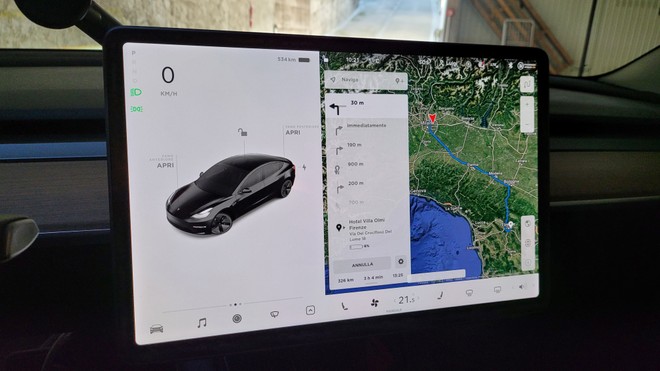
At the start of December 12th, therefore, I found myself in front of this situation: a 7% arrival estimate based on the city journey of the previous day. The heating of the car and the battery to cover a few kilometers and a very heavy foot, had led to a consumption of 6% in about ten kilometers.
Madness you may say … sure, but if I had done the same with my previous diesel car the situation would have been the same, exorbitant consumption compared to the average ones, not to mention a considerable stress to warm up the engine to avoid damaging starts at cold. I just wouldn't have noticed it being able to count on a refueling at the gas station in a few minutes …

The proof of the above comes during the trip, where I see the estimated autonomy increase on arrival. At Reggio Emilia the computer estimates a residual 19%.
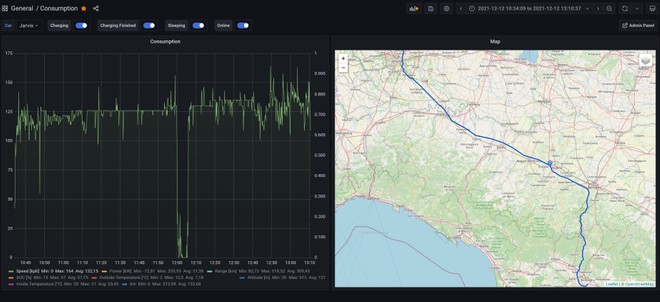
< p>On speed c & # 39; & egrave; little to say and the graph & egrave; somewhat explicit: when possible I did not spare myself from pressing on the pedal, the average & egrave; of 122 km/h including a break at the petrol station. The first section is; was all assisted by the Autopilot: it is useless to do the phenomena because on the initial part of the A1 there is no; fun and, excluding situations of hurry, it is better to keep a constant average rather than stressing the foot and the car with inevitable back and forth when you meet the disadvantaged on duty planted at 110 km/h in the third lane or the trucks overtaking.
MILAN – FLORENCE WITH TESLA MODEL 3 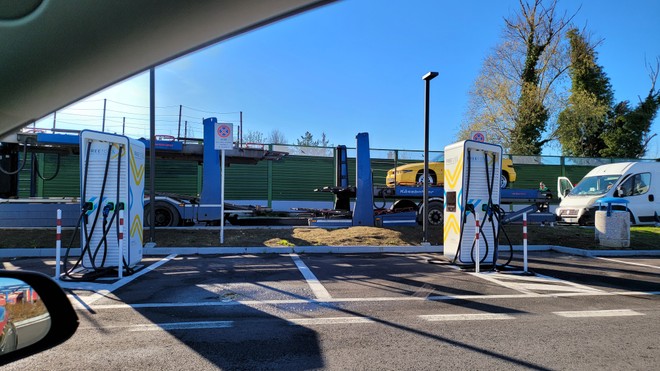
By pure coincidence, the request for a pit stop & quot ; tactical & quot; from my passenger & egrave; arrived when the gas station pi & ugrave; nearby was called Secchia Ovest, one of those already; active on the motorway with the Free to X project.
While I was waiting in the car strong of my iron bladder, I took the opportunity for a snapshot of the stations that I did not use. The autonomy was more that enough and on arrival I would have recharged at the hotel … fortunately for free and without cut tires.
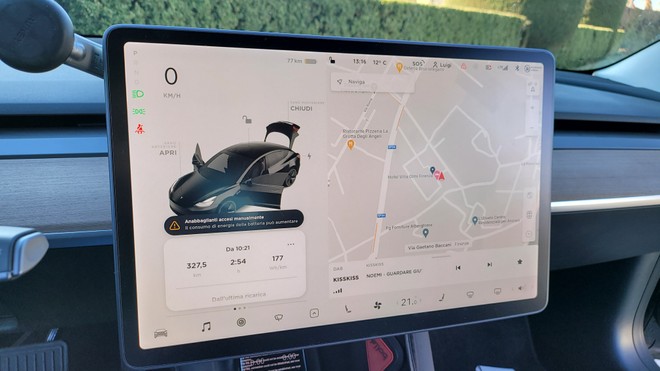
I arrive south of Florence after just under three hours and with a total average consumption of 19.3 kWh/100 km from departure to arrival, average & quot; all inclusive & quot; and verified with test equipment. With 327 km behind and 77 residuals, considering that the Apennine part has seen an increase in consumption both because & eacute; hilly, both because & eacute; more funny (therefore with heavier foot).
Model 3 has however confirmed its excellent efficiency: the speed; media from Secchia Ovest to the hotel Villa Olmi, crossing the Northern Apennines, & egrave; was 125.91 km/h : In this section the average consumption is; state of 22.6 kWh/100 km and, if you know the road, you know that it is not; possible to do it at speed; constant but requires several overtaking.
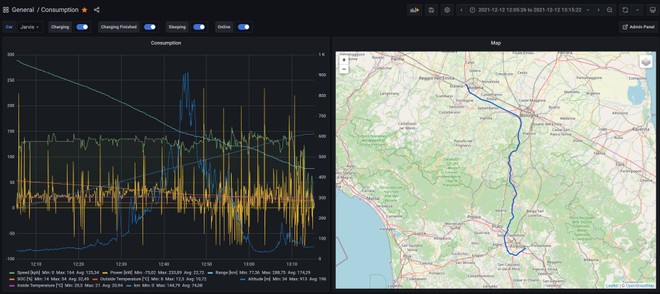


The numbers speak for themselves : the speed media is not; not at all within the reach of all those who travel that route even with a traditional car, and the result in terms of consumption is; very interesting if we consider the pace and the peaks and characteristics of the track.
The blue curve shows how the maximum altitude reached is almost 1,000 meters, the yellow one shows the peak power of the engines (yes & egrave; arrived at maximum requests equivalent to 318 hp) and the cockpit & egrave; always been kept at an average of 21 & deg; thanks to the air conditioning.
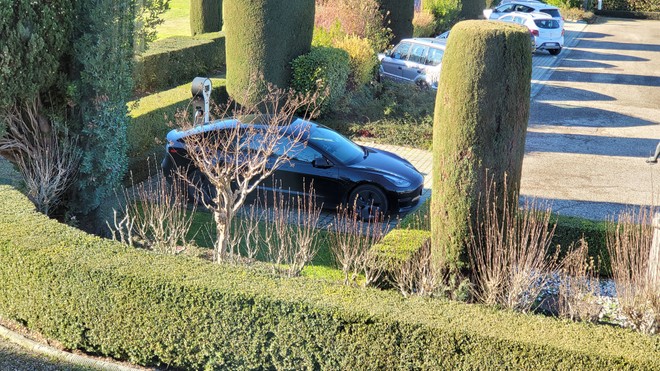 The Fold 2 tele camera needs to go a long way to improve …
The Fold 2 tele camera needs to go a long way to improve …
After a non-stop trip for recharging , the Model 3 is & egrave; enjoyed the stay connected to the plug. The first day in Florence I had planned a whole series of routes in the city; and it was useless to take the car around and pay for the parking for the whole day. Florence & egrave; very enjoyable on foot and, if I really wanted to get closer to the city; with my car, the remaining 77 kilometers would have allowed me.
If I hadn't had the hotel , I would have been able to park the car at a charging station and be able to count on 6 and a half hours of & quot ; parking included & quot; (during charging, without clearly exceeding) to bring it back to 100% at an 11 kW column. The stop would have been prolonged if I had found a 7 kW column.
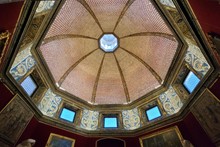
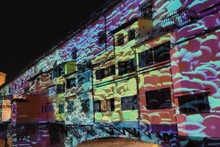 = “wp-content/uploads/d80f3aa26ea04977fc6e0984e72dac95.jpg “/> A few shots from Florence with the Z Fold 2 5G
= “wp-content/uploads/d80f3aa26ea04977fc6e0984e72dac95.jpg “/> A few shots from Florence with the Z Fold 2 5G
In any case, the more choice practice was to take a taxi to the Uffizi and then spend the day exploring the city; on foot (or using shared bikes/scooters if you are lazy). Charging at approximately 1.30pm with 14% battery remaining, the Model 3 was back to 100% at 8pm. Cost of recharging? Free (or rather, included in the cost of the hotel room) through the RePower column which delivered its 11 kW with an enviable constancy.
The second day of vacation in Florence included a more itinerary; lively : morning in San Miniato al Monte and then leave the car at the car park in the Boboli Gardens area. From l & igrave; continue on foot for a visit to the Christmas market in Piazza Santa Croce, lunch, return to the hotel and evening at the Trattoria Omero in the south of Florence.
On the third day the work part was waiting for me: after the two days of vacation I left again with 100% charge towards the Tenuta di Artimino, about 40 km from my hotel in Florence which was the base and to which I would return on December 15th to retrieve arms, luggage and passengers, finally setting off for home.

 Auto Dec 16
Auto Dec 16
The interlude is not very significant, if not for the test of the Suzuki S-Cross that you can see above, but it serves to explain why & eacute; of that hole and the restart with the car at 78% on the fourth day (December 15): Round trip to Carmignano cost me 22% of battery driving very happily through the curves of the Tuscan hills.
FLORENCE – MILAN WITH TESLA MODEL 3 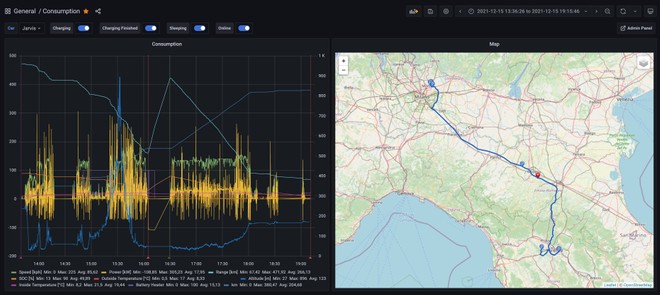
The summary of the return trip is; this, to be zoomed in and tightened in the timetables because & eacute; on arrival in the Monza area I took advantage of it for a couple of errands and a passage to shop, in short. Eliminating those breaks from consumption, thus focusing strictly on the journey. The graph shows the route from toll booth to toll booth :

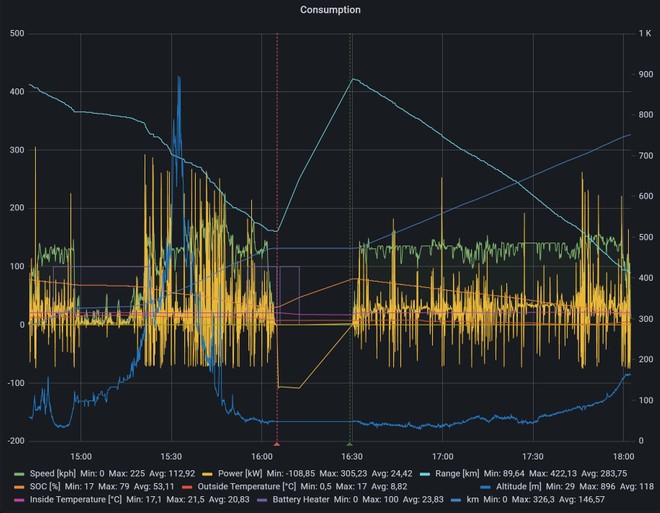
Every trip is; a story to s & eacute; and on the way back you have more and more; rush to go . In this case, how can you & ograve; to note, the stress of an important block around Prato, practically stopped for about 20 minutes due to exceptional transport, contributed to consumption.
So I decide to recover and have fun by mistreating the Model 3 uphill and making them unload their electric horses on the ground for good: fortunately the green curve of speed; & egrave; covered by the yellow one of power and both overlap the part where the maximum altitude is reached and then cross the hill. For obvious reasons, I don't zoom in on speed; average of that route …
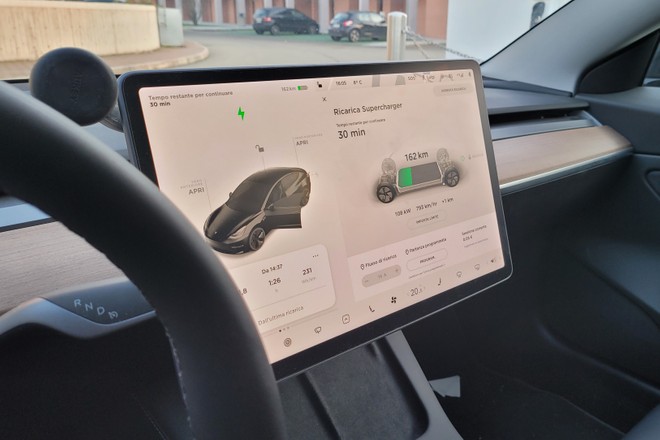
After all this stress was inevitable < strong> charging at the Supercharger . The car changed its approach and, given my heavy foot, it anticipated the stop advising me to stop in Modena. Believe it or not, the foreseen 30 minutes was enough for the queue at the bar for a sandwich (the catch up of the missed lunch), a jump to the bathroom and coffee: time your next stop at the Autogrill when you are not traveling alone and tell me if 30 minutes don't go by quickly …


Stop for 24 minutes to enter 35 kWh at a cost of 15.48 & euro; . Allotment and from tollbooth to tollbooth I keep an enviable speed; average of 129.97 km/h Tutor-proof (with much higher points for overtaking) to get to the Agrate toll booth with 18% battery charge, enough for errands and to leave me an emergency margin for any unexpected events. Consumer & agrave; then a further 5% in the route made up of stops and starts before arriving home.
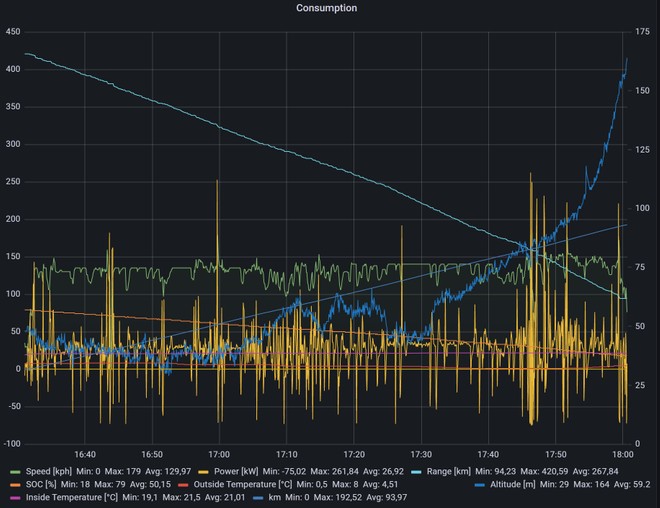
Consumption is clearly soaring, so how they wheeled with diesel or petrol cars with which I faced the same route with the same driving style at the Fast & amp; Furious. We will see in the final chapter how times are similar, what changes is; driving style and context: speed; constant (but with a good average) means arriving at your destination without stopping for recharging. Speed less constant, more & ugrave; traffic and more; push-and-pull (while having fun driving) means arriving at your destination at the same time but with a stop for recharging.
PULL THE SUMS 
 deflate. In any case, so that & eacute; you can customize the account based on your data, I put the <strong> kWh consumed </strong> cos & igrave; that you can study these two guides: </p>
<p> <img src = )
 Auto 04 Apr
Auto 04 Apr

 The difference between kW and kWh and why? ? important | Drive electric cars 163
The difference between kW and kWh and why? ? important | Drive electric cars 163
Auto 28 Mar
and do your calculations.
- Monza-Florence: 63.24 kWh , around 11 & euro; charging from home.
- Florence-Monza: 81.68 kWh , of which 35 kWh to the Supercharger . 15.48 & euro; (Supercharger) + 0 & euro; (hotel)
Adding the 8.87 & euro; to bring the car back to 84% after the trip and you get a total of about 35 & # 39; euro; for electricity.
If you are not staying in a hotel, you can substitute those “ zero euros '' with the price of recharging at a column assuming a day trip, or with electricity at home or with any other recharging method you prefer. Without subscriptions, the approximately 47 kWh recharged & quot; extra-supercharger & quot; cost 19 & euro ;. Travel times:
- Outward journey: 2 hours 54 minutes with bathroom stop
- Return: 3 hours (and 20 minutes) with a stop at the Supercharger (swim + quick lunch) and 20 minutes of queue
The best value for money 5G Smartphone? Redmi Note 9T, buy it at the best price from Unieuro at 199 euros .

